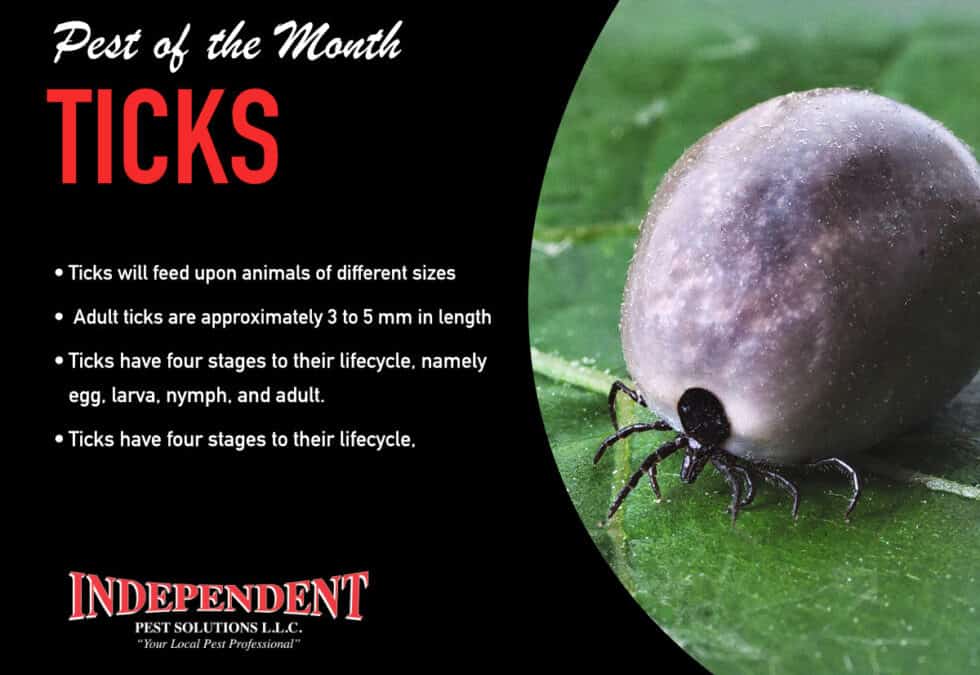TICKS
The October Pest of the Month
We typically do not have ticks here in Western Washington. Ticks will feed upon animals of different sizes as they get bigger during the stages of their lives. Usually, a household doesn’t have that kind of variety, which doesn’t allow ticks to develop for their full life cycle. Like most creatures in the animal kingdom, ticks will eat what they can get, but their “preferred” target host changes with each stage of their development. During their earliest stages, they feed on very small animals such as mice, followed by larger mammals such as rabbits. Form there, they move up to even larger animals like raccoons or possums, and finally as adults they feed on very large mammals such as deer and people.
Ticks are unique in that their larval stage has six legs, while their nymph and adult stages have eight legs. When ticks are in their larval stage, they are often misidentified as another insect or people don’t even know what they’re looking at. There are local companies that do deal with ticks, but instead of offering structured pest control services, they usually do more of a landscape or broader-area treatment.
It’s best to avoid walking in tall grass, which is known as “tick areas,” because ticks like to climb to the top of the grass stalks. They hang on with their rear four to six legs, while the front two to four legs are extended. This is known as “questing,” and it allows them to get easy access to the animal so that the ticks can cling onto them in a location where they are unlikely to be brushed away by foliage. Imagine a tick trying to climb up the leg of a deer with short fur while it is barreling through the brush, it would be very difficult.
In any case, anyone who has had to deal with ticks will not ever forget the experience. They are not especially painful, but the process of pulling one out of your flesh can be quite upsetting if you have never experienced it before.


